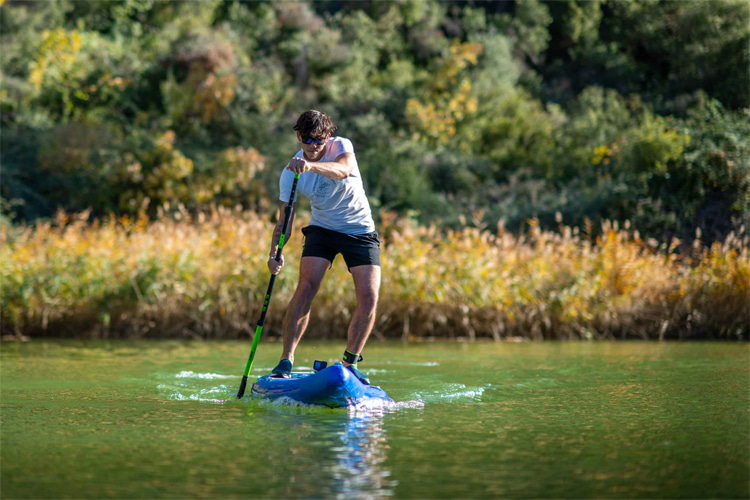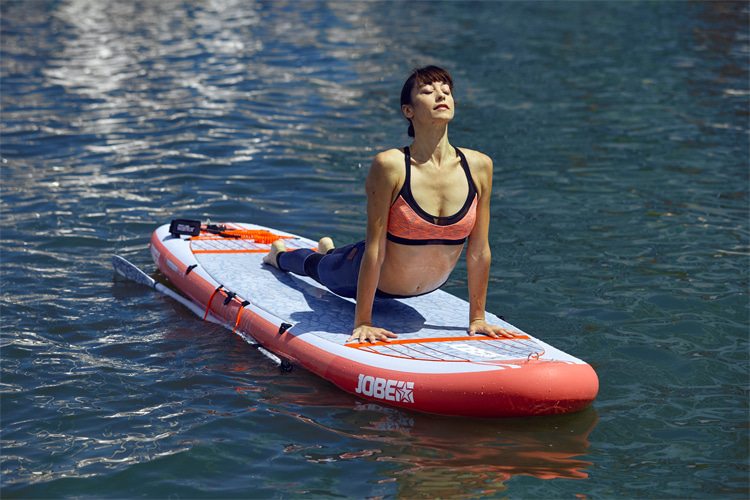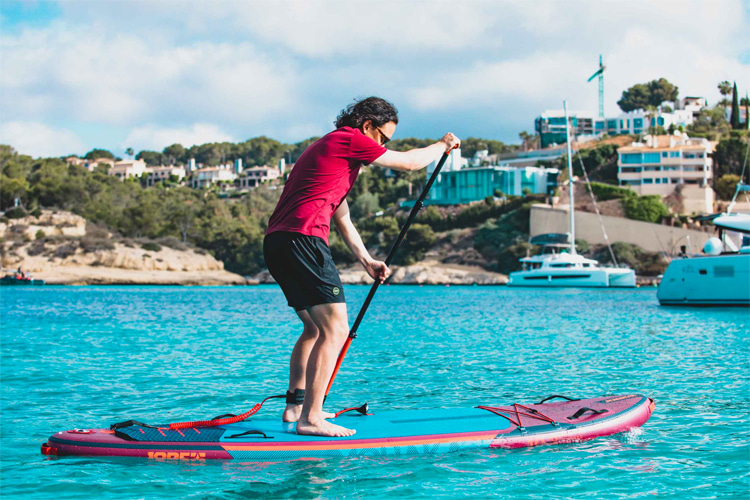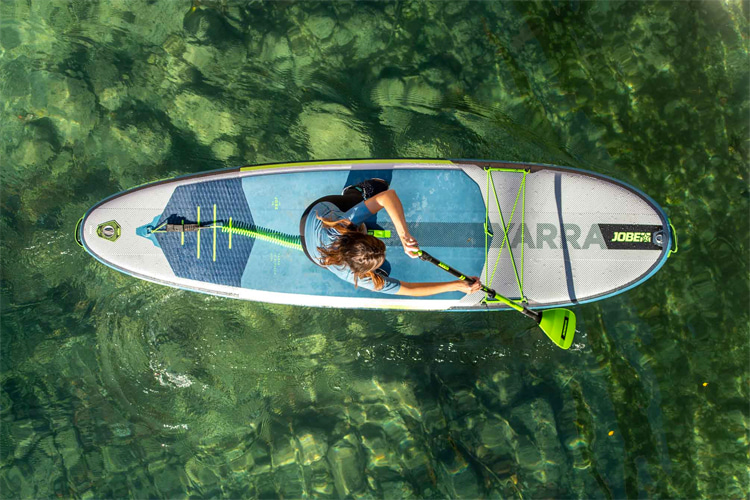When choosing a stand-up paddleboard (SUP), there's always a delicate balance that can be challenging to fine-tune. So, should you look for speed, stability, or both in an inflatable SUP?
Performance is almost never a question of picking black or white. Sometimes, virtue is dark or light gray.
With all the commercial options out there, it's also crucial to know which factors enhance these qualities in a paddleboard.
Let's analyze the benefits of choosing speed variables over stability factors and vice-versa and see what could be done to maximize the outcome.
In hydrodynamics, stability is associated with floatation and volume, while speed is connected to design and template/outline.
In other words, an SUP with more volume (in liters) - width, length, and thickness - will provide more firmness and will be easier to paddle.
On the other hand, a fast paddleboard has less surface area in contact with the water and probably a more pointy nose and tail.
"Speed is not just about making the longest distance within the shortest period of time," explains Ruben Kuiken, product developer at Jobe Sports.
"It usually goes hand-in-hand with less friction, making it less hard to generate speed so that you can use your energy longer."
"When talking about stability, developers focus on creating an inflatable SUP that makes the sport more accessible but also helps the user gain confidence no matter the conditions.
"Another thing to look for is a board with good traction - this goes well together with stability. So stability and traction are key variables to look for as they provide a better paddleboarding experience."
Let's dissect both variables.

SUP Speed
A narrow shape is the most important thing you need to look for when searching for a board with more speed.
Generally speaking, you shall see a sharp nose combined with a narrow SUP outline, as it creates less friction and can really cut through the water like a hot knife through butter.
The speed template often features a tapered tail, i.e., a tail shape that gets narrower at the end than the center of the board.
The goal is to create a shape with excellent floating characteristics capable of generating plenty of speed.
So, once you start moving, you will notice that the board will not only gain speed but also with less arm power and effort.
These types of shapes are mostly found in tour/race-specific paddleboards. They are traditionally longer in size to compensate for their narrow shape.
If there is a downside, it is that they provide less stability.
As a result, we usually see these templates in use by advanced paddlers with hundreds - if not thousands - of miles on the water already.

SUP Stability
Stability is a key SUP feature for many reasons.
First, it provides more confidence for beginner paddlers and SUP yoga enthusiasts in tricky weather and ocean conditions.
It is also vital for recreational paddlers who want to take someone along for a ride.
Consequently, stability is probably one of the most sought-after board qualities. So, the outline is what comes into play here.
How to Balance Speed and Stability on a SUP?
So, we want and need the best of both worlds - a narrow shape for more speed and a wider board for more stability.
It's definitely a fine balance. Here's why:
Generally speaking, a rounder nose combined with a wider shape creates a more forgiving shape and makes for an easy user experience.
The downside of a wider board is that it does generate less speed, as you have to paddle more to get the board moving across the water.
"People don't think of it as a slow board. You will only find a difference when you compare it to a more narrow, tour-specific shape," adds Kuiken.
"A shape focused on stability is commonly found on all-around SUP boards, the leading choice for many consumers."
"But remember that, as mentioned before, traction is also important as it also helps improve the stability of a SUP board."

The Verdict
So what SUP should you choose?
Advanced riders will opt for race-specific shapes and boards with narrow outlines that generate a significant amount of speed.
Their paddling experience compensates for the loss of stability and board control levels - speed performance is non-negotiable.
Someone looking for more stability tends to go for a larger SUP model.
The trick is to get a board with less speed than a race or touring template, but it isn't necessarily slow.
"The optimal compromise could be the all-around stand-up paddleboards that simultaneously allow participants to practice meditation and take the family for a ride," concludes the Jobe Sports product developer.
So, when it comes down to choosing an inflatable SUP, there are three options:
- A board that blasts over the water;
- A model with enough stability to paddle your family;
- An in-between all-around paddleboard;
Whatever you choose, always consider evaluating your experience, confidence level, and specific riding needs.
When in doubt, ask your local surf shop for more information and suggestions on the perfect inflatable stand-up paddleboard.
